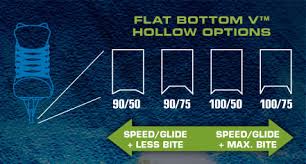"The attention that you devoted to sharpening mine and my daughter's blades correctly was way beyond what I had expected. I was astounded by the difference once we got on the ice. I'm so glade I found you. The extra drive time is well worth it."
-Jodi C.
"They are wonderful. Somehow you have a way of sharpening blades that you don't kill yourself the first time you step on the ice. They feel great."
-Maria M.
"Thank you, Matt! My skating completely changed after just one sharpening. Every move flowed with ease. Your attention to detail is exquisite!"
-Rita A.
"Stephanie LOVED the sharpening. Her three turns were so improved and she says she can feel more control, and a better edge, the way they were sharpened makes it feel more natural."
-Michelle B.
"Afternoon Matt skated on the new blades last night. Can really feel a difference in both glide and edges plus scored 3 goals love the edges too so guess we r locked in THANKS!!!!!"
-Tim D.
"Continuous flow and sureness of edge and clean turns on brackets and counters..."
"I had my twizzles today on them!!! I absolutely love them"
-Terry M.
"Hey Matt.....thx for the skates...bro...they felt amazing ...felt like way more blade on the ice...pretty unreal... No unsteadiness... Really like them... Thanks!"
-Tom M.
"Thomas really likes the cut. Thanks again."
-Mark
"You should have seen how Marcel did skating on your blades, he used edges a lot and never fell. Thank you so much again.."
-Rustem
Actual customer statements
Trusted Edge Precision Skate Sharpening
Sharpening Basics
To achieve the proper sharpening for both figure skaters and hockey players several factors should be taken into consideration. The main factors to consider include skating activity, skating style, skill level, weight and ice temperature. In hockey and figure skating the skate blade is ground in a way that produces two (2) even edges (termed the inside and outside edge). Traditional sharpening cuts a circular shape into the bottom of the blade called a Radius of Hollow (ROH). The shape (depth) of this hollow is gauged by the radius of the angular dressing device that prepares the cutting wheel with the correct ROH. The smaller the radius the deeper the hollow. A deeper ROH produces edges with a steeper bite angle. The steeper the bite angle the more the skate blade will sink into and grab the ice. Deeper hollows with steeper bite angles provide more grip but come with the price of sacrificing glide performance. With a deeper ROH the skater will have to work harder to overcome the friction caused by the steep bite angle.

Blackstone Sport's Flat Bottom V (FBV) technology offers an alternative. Instead of cutting a circular hollow the wheel is prepped to cut a flat bottom with two (2) small edges that range from 0.0005 inches to 0.001 inches in depth/height depending on the cut profile. The bite angle of the small edges provide equivalent edge bite while the flat bottom provides easier glide. The bite angle is increased or decreased by varying the length of the flat bottom hollow.

The goal for the skater should be to work with an experienced skate sharpener to find a sharpening that will provide a good balance between edge bite and glide performance for their skating activity.
Skating Activity
Hockey players have their own unique set of preferences as do recreational and figure skaters. Hockey players as well as recreational skaters typically choose between traditional circular ROH or Blackstone's FBV. Figure skaters use traditional circular ROH almost exclusively.
Weight
Weight should be strongly considered when choosing the correct sharpening. Heavier skaters will sink into the ice easier and will likely prefer a shallower ROH from 1/2 to 3/4 inches or a FBV of 90/1, 90/75 or 90/50. Lighter skates can tolerate deeper hollows and steeper bite angles 3/8 to 1/2 ROH or 100/75, 100/50 FBV.
Ice Temperature
Figure skating ice is typically several degrees warmer (softer) than hockey ice (harder). Seasonal temperature changes can effect the softness and hardness of indoor ice rinks to a degree that may warrent a sharpening adjustment. We typically recommend going up or down a level for summer ice vs winter ice. For example, a skater that skates on a 1/2 ROH in the summer should consider changing to a 7/16 ROH for the winter to achive equivalent performance on harder ice.
Skill Level
Typically for freestyle figure skaters who are still learning basic skills and are still working on simple jumps such as the Waltz jump a light freestyle cut or 1/2 ROH is recommeded. As freestyle figure skaters improved to a point were they have mastered their single jumps a 7/16 ROH is recommended. Skaters working on figures typically prefer much shallower hollows making edge work easier. These are starting points and can change from skater to skater based on personal preferences beyond the factors discussed here. For hockey players weight is usually more of a factor, however, contemporary advise is for hockey players to move to a shallower ROH as they improve on their edges. This allows players to gain performance by decreasing glide friction. However, there are still many highly skilled players that prefer a deep ROH such as 3/8.
Contact Trusted Edge to evaluate your current sharpening and see how we can help take you to a new level of skate sharpeing precision and performance.




